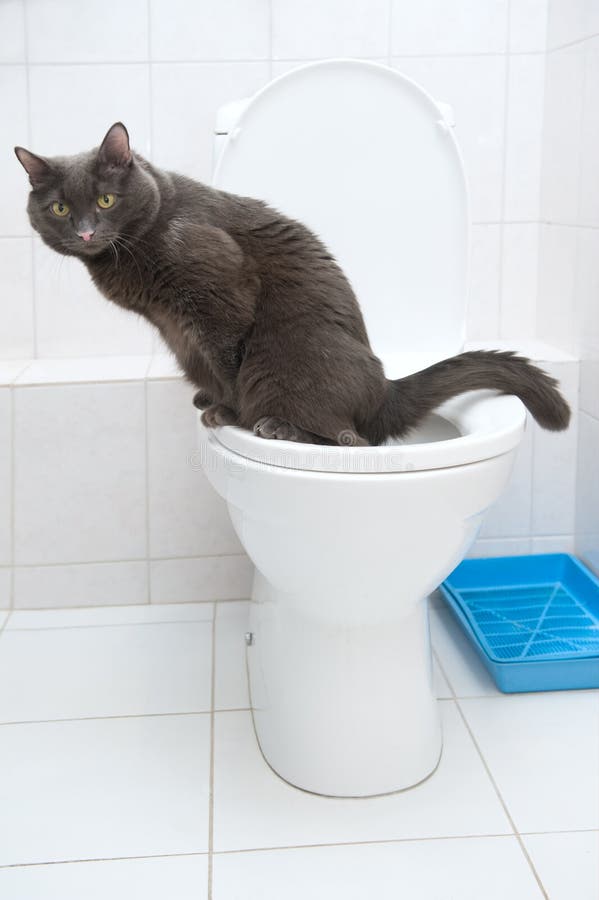Avoid Clogs and Damage: Never Flush Cat Poop Down Your Toilet - Professional Insights
Avoid Clogs and Damage: Never Flush Cat Poop Down Your Toilet - Professional Insights
Blog Article
Nearly everybody maintains their own unique opinion about How to Dispose of Cat Poop and Litter Without Plastic Bags.

Introduction
As cat owners, it's vital to bear in mind just how we deal with our feline buddies' waste. While it might appear practical to purge pet cat poop down the bathroom, this technique can have harmful consequences for both the setting and human health and wellness.
Ecological Impact
Purging feline poop introduces damaging microorganisms and bloodsuckers into the supply of water, presenting a significant threat to aquatic ecological communities. These pollutants can adversely influence marine life and compromise water top quality.
Health Risks
Along with environmental concerns, purging pet cat waste can also present health threats to people. Feline feces might include Toxoplasma gondii, a parasite that can trigger toxoplasmosis-- a possibly extreme health problem, especially for expecting ladies and individuals with weakened body immune systems.
Alternatives to Flushing
The good news is, there are much safer and a lot more responsible methods to deal with pet cat poop. Consider the following alternatives:
1. Scoop and Dispose in Trash
The most typical approach of getting rid of cat poop is to scoop it right into a naturally degradable bag and toss it in the trash. Make certain to use a committed trash scoop and dispose of the waste quickly.
2. Use Biodegradable Litter
Select eco-friendly pet cat clutter made from materials such as corn or wheat. These litters are environmentally friendly and can be safely gotten rid of in the trash.
3. Hide in the Yard
If you have a yard, think about burying pet cat waste in an assigned location far from vegetable gardens and water resources. Be sure to dig deep enough to prevent contamination of groundwater.
4. Set Up a Pet Waste Disposal System
Purchase a pet waste disposal system specifically created for pet cat waste. These systems make use of enzymes to break down the waste, reducing smell and environmental impact.
Verdict
Liable pet possession prolongs beyond giving food and sanctuary-- it likewise involves appropriate waste administration. By avoiding purging cat poop down the bathroom and selecting alternative disposal approaches, we can lessen our ecological impact and protect human health.
Why You Should Never Flush Cat Poop Down the Toilet
A rose by any other name might smell as sweet, but not all poop is created equal. Toilets, and our sewage systems, are designed for human excrement, not animal waste. It might seem like it couldn’t hurt to toss cat feces into the loo, but it’s not a good idea to flush cat poop in the toilet.
First and foremost, assuming your cat uses a litter box, any waste is going to have litter on it. And even the smallest amount of litter can wreak havoc on plumbing.
Over time, small amounts build up, filling up your septic system. Most litter sold today is clumping; it is made from a type of clay that hardens when it gets wet. Ever tried to scrape old clumps from the bottom of a litter box? You know just how cement-hard it can get!
Now imagine just a small clump of that stuck in your pipes. A simple de-clogger like Drano isn’t going to cut it. And that means it’s going to cost you big time to fix it.
Parasitic Contamination
Believe it or not, your healthy kitty may be harboring a nasty parasite. Only cats excrete Toxoplasma in their feces. Yet it rarely causes serious health issues in the cats that are infected. Most people will be fine too if infected. Only pregnant women and people with compromised immune systems are at risk. (If you’ve ever heard how women who are expecting are excused from litter cleaning duty, Toxoplasma is why.)
But other animals may have a problem if infected with the parasite. And human water treatment systems aren’t designed to handle it. As a result, the systems don’t remove the parasite before discharging wastewater into local waterways. Fish, shellfish, and other marine life — otters in particular — are susceptible to toxoplasma. If exposed, most will end up with brain damage and many will die.
Depending on the species of fish, they may end up on someone’s fish hook and, ultimately on someone’s dinner plate. If that someone has a chronic illness, they’re at risk.
Skip the Toilet Training
We know there are folks out there who like to toilet train their cats. And we give them props, it takes a lot of work. But thanks to the toxoplasma, it’s not a good idea.

We hope you enjoyed our article on How to Dispose of Cat Poop and Litter Without Plastic Bags. Many thanks for taking time to read our short article. Do you know about someone else who is interested in the topic? Feel free to promote it. Many thanks for taking the time to read it.
Schedule Your Job Now Report this page